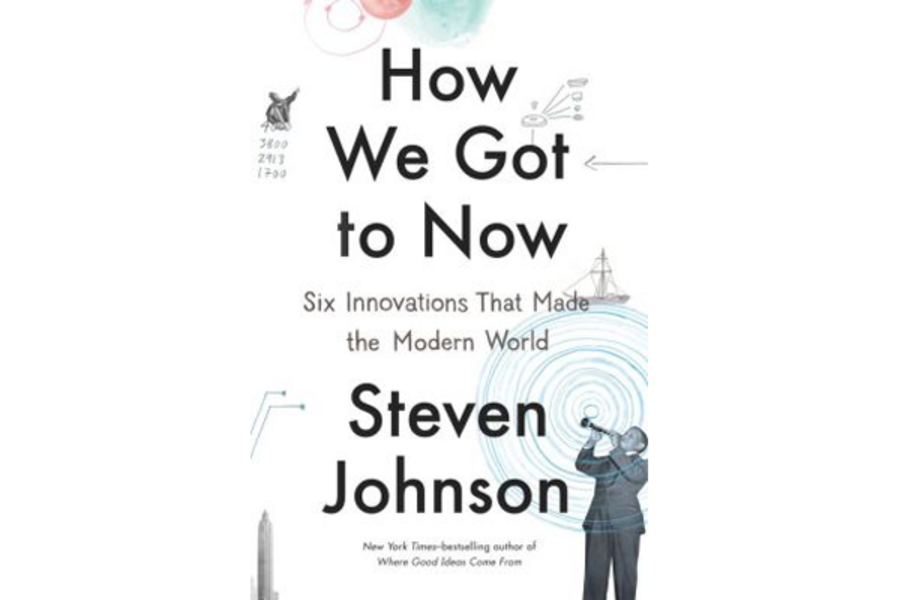'How We Got to Now' credits six technologies with helping to invent modern life
Loading...
Steven Johnson’s How We Got to Now: Six Innovations That Made the Modern World opens with an intriguing thought experiment: imagine some form of artificial intelligence analyzing the data of human history. What sort of story would it tell?
If we could avoid programming certain human fixations into the computer, an unusual perspective might emerge. The familiar dynastic sagas of succession, betrayal, and conquest; the waxing and waning of empires; and the intellectual feats of geniuses would appear as unremarkable statistics in larger data sets. With all their engrossing particularities and eccentric personalities stripped away, many episodes from history would just be additional instances of an expected pattern.
But facts and developments that traditional histories tend to marginalize might suddenly seem momentous. The chemical properties of superheated silicon dioxide are not typically given a central role in the human story. And yet without glass, a substance which forms as silicon dioxide cools, the modern profusion of lenses and screens – from smart phones to microscopes to spectacles – would not exist.
Johnson tries to approximate the vantage of a non-human historian in his new book. Adopting what he calls a “long-zoom” approach to history, he traces the development of six influential but often overlooked technologies that have shaped the textures and conditions of contemporary life.
He begins 26 million years ago, with an atmospheric event in the Libyan desert that created glass, then leaps ahead to the glass ornaments that decorated the tomb of an Egyptian pharaoh. Another leap takes us to Venice in the 13th century, where a community of Turkish glassmakers settled after the sack of Constantinople in 1204. Because glass production requires furnaces operating at above 500 degrees, the glassmakers had the unfortunate habit of frequently burning down the wooden neighborhoods where they worked. Hoping to protect the city, the Venetian doges exiled the glassmakers to the island of Murano, a mile across the lagoon.
The dense concentration of so many experts increased competition and collaboration in the trade, and the innovative atmosphere of experimentation soon enabled the production of an incredibly clear type of glass similar to what we use today. The story of glass in human culture was just beginning. Monks poring over manuscripts for long hours often damaged their eyes, but tinkerers discovered that the use of glass in corrective lenses could alleviate the strain.
After Gutenberg’s invention of the printing press in the mid-15th century, the activity of reading began to spread more widely through Europe. Many people suddenly realized that they couldn’t read without the assistance of glasses, and demand for spectacles surged. This new demand prompted hundreds of Europeans to experiment with using convex lenses to manipulate light, and these pioneers in optics invented the microscope and the telescope by the early 17th century.
Johnson is fascinated by the unforeseeable consequences of new technologies. The connection between Gutenberg’s printing press and Galileo’s telescope is hardly obvious, but he draws a compelling line from the birth of print culture to a general interest in lenses that eventually helped Galileo develop a tool that toppled the heliocentric model of the universe.
Of course there were many other preconditions for Galileo’s discovery, so it’s simplistic to say that Gutenberg caused the invention of the telescope. And as with any counterfactual hypothesis, it’s impossible to test whether the telescope or the microscope would have developed without an abundance of printed material acting as an indirect catalyst. These constraints limit the power of his analysis, but Johnson often makes intriguing and plausible connections between seemingly disparate events in the history of science and technology.
The story of glass winds through many other cultural developments, from the rise of mirrors in the Renaissance to the development of fiber optics and computer screens in the 20th century. And glass is only one of six innovations Johnson covers. He also explores our species’ attempts to manipulate and measure sound, light, temperature, sanitation levels, and time.
The material is often intriguing, but Johnson covers such massive spans of time and long sequences of discovery that not every topic is treated with quite the depth it merits. Still, the book is a rapid but interesting tour of the history behind many of the comforts and technologies that comprise our world.








